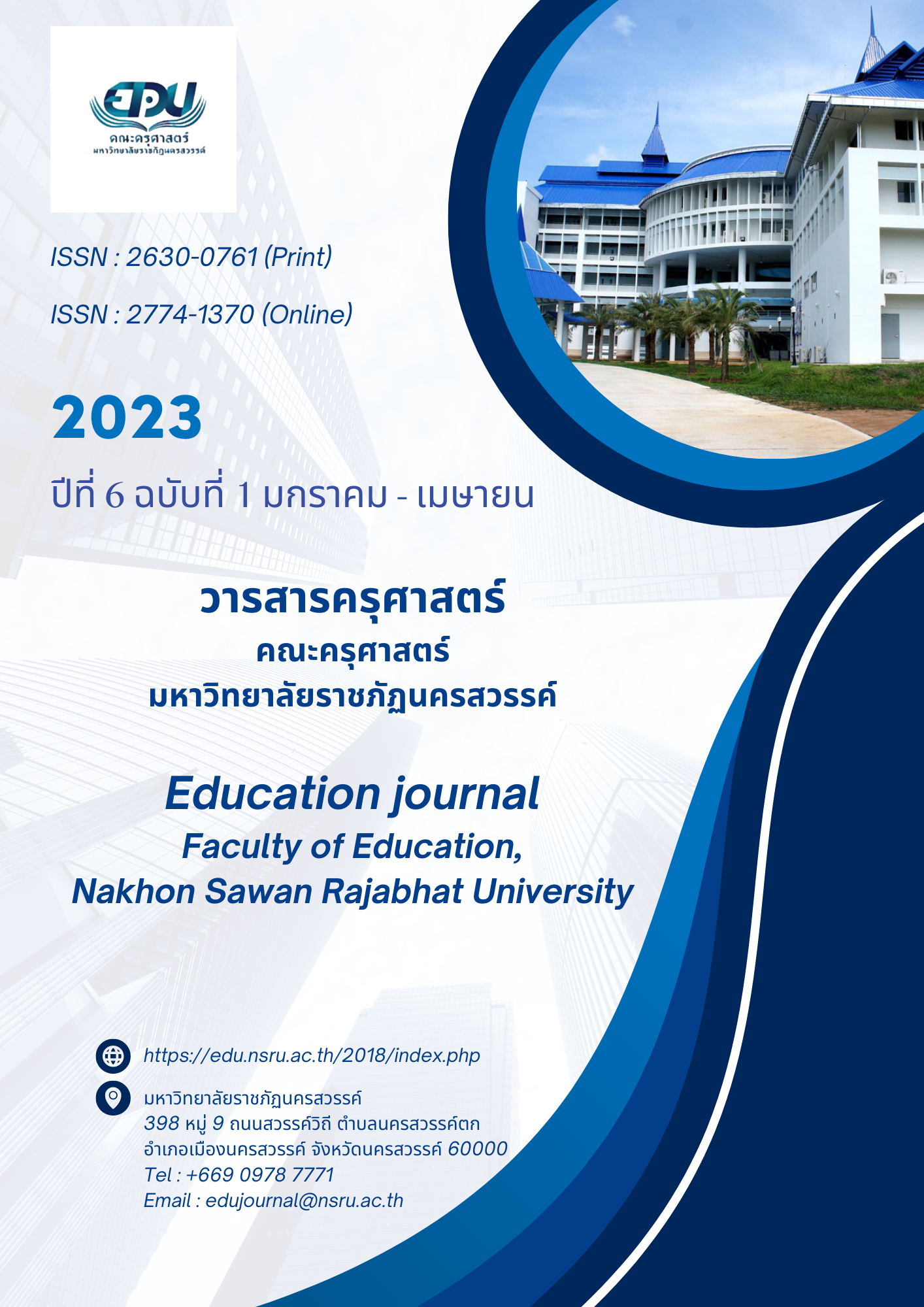STEM Education and Knowledge Management of History, Art, Culture and Local Wisdom of Ethnic Group in Nakhon Sawan Province
Main Article Content
Abstract
STEM education is a learning management concept that integrates 4 disciplines: science, technology, engineering. and math. The teaching and learning activities focus on implementing the activities by using an engineering design process that starts with coping, collecting data, designing a solution or work piece, execute the solution, Evaluate the solution and present a problems solving or workpieces. There are several approaches to learning through STEM education, including using problems base learning, project-base learning and the design-base learning by using engineering design process. There are also many learning tools available especially in the 21st century, there are various tools, media or assistive technology. But modern tools are not the only tools of learning. The local wisdom is another good learning tool for the new generation. Wisdom through thinking, filtering, through trial and error, trying and correcting until it can facilitate the ancient people. Which is hidden with knowledge of the content of various subjects, not losing the current learning. Therefore, STEM studies were used to help analyze local wisdom and how there is a body of knowledge and process before it can be used. or problem solving After analyzing, learners will be guided to develop wisdom with new knowledge and technology, allowing tools from traditional local wisdom to be reused again, which is one way to help preserve the arts, culture and traditional wisdom as well.
Downloads
Article Details

This work is licensed under a Creative Commons Attribution-NonCommercial-NoDerivatives 4.0 International License.
References
กนกวรรณ แก้ววงศ์. (2560). ประวัติความเป็นมาของไทยทรงดำ. สืบค้นเมื่อ 7 มกราคม 2564, จาก http://www.obtwangchan.go.th/site/index.php?option=com_content&view=article&id=90:2560&catid=3:newsflash&Itemid=63.
พรทิพย์ ศิริภัทราชัย. (2556). STEM Education กับการพัฒนาทักษะในศตวรรษที่ 21. วารสารนักบริหาร, 33(2): 49-56.
มนสิช สิทธิสมบูรณ์. (2563). การจัดการเรียนรู้สะเต็มศึกษา. พระนครศรีอยุธยา: โรงพิมพ์มหาจุฬาลงกรณราชวิทยาลัย.
สถาบันส่งเสริมการสอนวิทยาศาสตร์และเทคโนโลยี (สสวท.). (ม.ป.ป.). กระบวนการออกแบบเชิงวิศวกรรม. สืบค้นเมื่อ 24 ธันวาคม 2563, จาก http://www.stemedthailand.org/?page_id=23.
สถาบันส่งเสริมการสอนวิทยาศาสตร์และเทคโนโลยี (สสวท.). (ม.ป.ป.). สะเต็มศึกษาและการออกแบบเชิงวิศวกรรม. สืบค้นเมื่อ 18 พฤศจิกายน 2563, จาก http://www.stemedthailand.org/?knowstem.
สุชาติ แสงทอง. (2559). ความหลากหลายทางวัฒนธรรม และชาติพันธุ์ในนครสวรรค์. นครสวรรค์: สำนักศิลปะและวัฒนธรรมมหาวิทยาลัยราชภัฏนครสวรรค์.
สุทธิดา จำรัส. (2560). นิยามของสะเต็มและลักษณะสำคัญของกิจกรรมการเรียนรู้ตามแนวสะเต็มศึกษา. วารสารศึกษาศาสตร์ มสธ., 10(2): 13-34.
สุธิดา การีมี. (2560). การใช้กระบวนการออกแบบเชิงวิศวกรรมเพื่อเสริมสร้างความคิดสร้างสรรค์และทักษะการแก้ปัญหา ตอนที่ 1. นิตยสาร สสวท., 46(209): 23-27.
สุพรรณี ชาญประเสริฐ. (2557). การจัดการเรียนรู้วิทยาศาสตร์และทักษะที่จำเป็นในศตวรรษที่ 21. นิตยสาร สสวท., 42(186): 3-5.
เสรี ซาเหลา, และคณะ. (2545). รายงานการวิจัย เรื่องกลุ่มชาติพันธุ์: วัฒนธรรม ประเพณี จังหวัดนครสวรรค์. นครสวรรค์: สถาบันราชภัฏนครสวรรค์.
อมรรัตน์ เตชะนอก, และคณะ. (2563). การจัดการศึกษาในศตวรรษที่ 21. วารสารมหาจุฬานาครทรรศน์, 7(9): 1-15.
OpenRice TH Editor. (2559). ประวัติข้าวแช่และวิธีกินข้าวแช่ที่ถูกต้อง. สืบค้นเมื่อ 24 ธันวาคม 2563, จาก https://th.openrice.com/th/bangkok/article.


